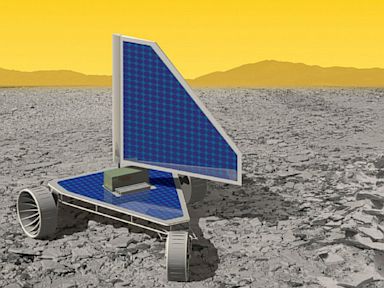Rather than observe the planet from afar, either through Earth's observatories or with satellites and probes, Geoffrey Landis and his team at NASA want to put a sail-powered rover on Venus's surface.
"Venus is the closest planet to Earth, but we know so little about it," Landis, the principal investigator behind the Venus landsail, told ABC News. "We'd be looking at a planet similar to Earth, but [something] went terribly wrong."

Landis's team went with a landsail design because it takes advantage of the planet's flat topography and its calm winds. "Venus's surface is remarkably smooth," said Landis. "It looks like a nice place for driving around." The rover would be passively powered by the sail and any electric power can instead be directed to the radio and the scientific instruments, he added.
| "Venus is the closest planet to Earth, but we know so little about it." |
For one, if Zephyr used a large parachute equal in size to the one that that landed the Mars rover, it would act more as a hindrance because of Venus's thick atmosphere. "You need a much smaller parachute. Otherwise, it would take a long time to come down," said Landis.
Landis and his colleagues have focused on getting Zephyr to Venus's surface, almost to the point that they're not even sure what to expect once it actually lands. "It's hard to predict what we'd find," said Landis. "But there are some very interesting land forms on Venus that we don't know anything about. It'd be enlightening to drive around and see what Venus looks like."
Mahaffy is also excited to see the possible questions Zephyr might answer. "Why is the atmosphere nearly 100 times that of Earth's? Was there some big volcanic event hundreds of million years ago that brought all this material to the planet's surface?" he asked. "Oh man, there's terrific science to be done on Venus."
While Zephyr wouldn't be the first rover to land on Venus, it would be the first to stay on the planet at least overnight. "The longest [lander] mission on Venus only lasted two hours," Landis said. Zephyr itself is still very early in its development, existing only on paper and prototypes. However, if it follows the path of Curiosity, we might see a crowd of excited engineers cheering Zephyr's triumphs in a decade or two.
Source
No comments:
Post a Comment
Note: Only a member of this blog may post a comment.